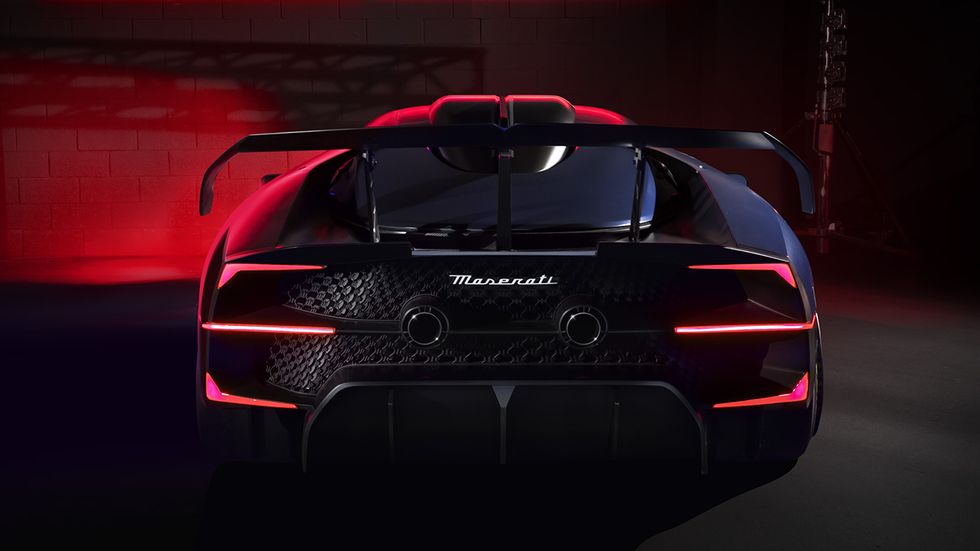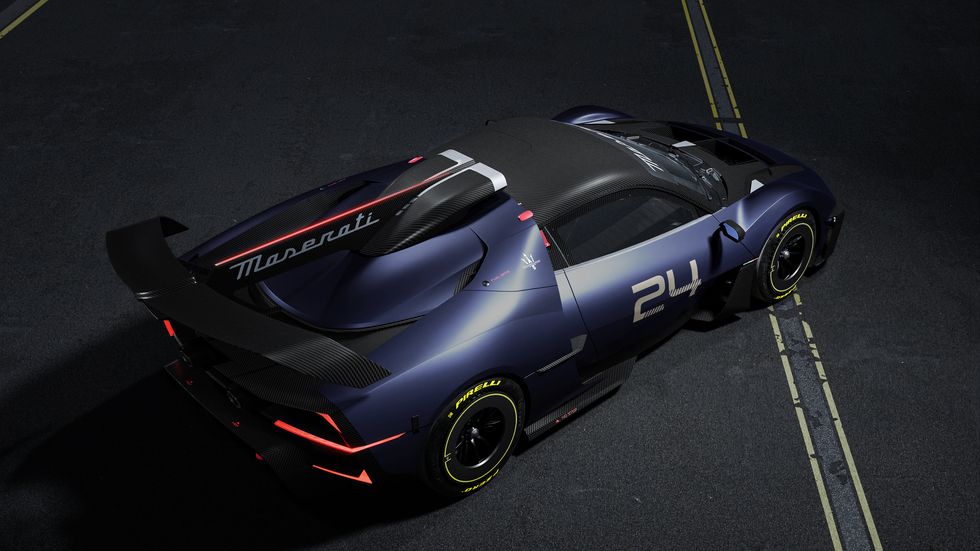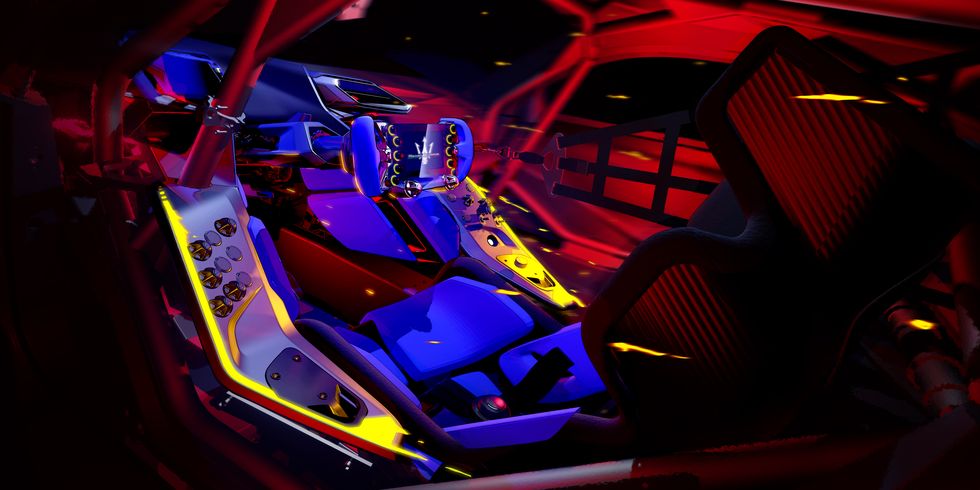- Maserati has its roots in racing, but the modern-day incarnation of the brand hasn’t shown much motorsports prowess, that is until recently.
- Entering Formula E, Maserati has had a mixed bag of results in the electrified race series, but a new track car known as the MCXtrema cements the importance of Maserati’s Motorsports division.
- Chief Commercial Officer Bernard Loire says that motorsports is essential to Maserati’s future from a technological, financial, and company morale perspective.
Standing in the day’s first marine layer break, Maserati’s executives shine next to the reflective chrome paint job adorning its new GranTurismo Luce. And higher-ups in both Modena and Michigan have reason to smile, too, as delivery numbers have nearly doubled since last year.
But the stylish group of bigwigs were in California for something more serious, something atypical of the 21st-century luxurious, Maserati tradition. In fact, this model won’t even be available to flaunt on Rodeo Drive or Madison Avenue.
That’s because it’s called the Maserati MCXtrema and it’s a track-only homologated racing car. 62 already sold units, a 730-hp 3.0-liter twin-turbo Nettuno V6, and an ultra-light, MC20-like carbon fiber monocoque chassis make the MCXtrema live up to its suggestive name.
Reading through the spec sheet of the model formerly known as “Project24”, it appears as though little expense was spared. From its all-new, in-house designed aero-kit and FIA-homologated roll cage to a double-wishbone, four-way adjustable suspension setup, and carbon fiber braking system, the MCXtrema checks every single-seat track car box.
Sold for around $1.9 million per unit, Maserati is walking away with approximately $117 million dollars in revenue (if not more) from these track specials. Sure, R&D costs were probably higher than your typical Grecale, but it’s no industry secret that pricey, special edition models can be used to make up financial holes in the annual budget.
However, launching the MCXtrema is about more than money, as Maserati’s Chief Commercial Officer, Bernard Loire, explained in an interview with Autoweek. It’s about an evolution and rediscovery of brand heritage, especially now that money is flowing through the Stellantis-backed brand.
“For some time, we did interrupt racing for different reasons, including economic reasons. We were not making money, we were losing money,” said Loire. “Now that we are back to profitability, it’s about our passion, but it’s also some business.”
Loire explained that racing and time at the track allows Maserati to not only bank on its heritage but to touch new customers. In this case, all 62 units of the MCXtrema have been spoken for by customers (40% of them sold in the Americas) that have some relationship with Maserati, but Loire says that racing provides some morale inside the company, too.
“Competition is definitely the good way to do it,” Loire said, citing the importance of growing the Maserati brand holistically. But it’s not just about getting new customers and filling quotas. To be competitive in the final internal combustion era, you need to offer fresh gas experiences as well as competitive electric power and range.
“Racing has always been a laboratory. And a Maserati has to be different. It has to provide the highest driving experience, and competition racing is going to help hit that,” Loire said.
The old journalism adage of follow-the-money applies here, too, but a glance at Maserati’s recent moves confirms Loire’s rhetoric. And if Maserati was just getting into motorsports for the money, it seems unlikely that the brand would join the least popular motorsport of all—Formula E.
On the contrary, investing in Formula E has been explained as hedging for the future, and not just by Maserati. Testing the highest technology electric propulsion available today, Formula E is worthwhile if only for the jump on all-out battery performance numbers.
“Formula E has an advantage in the sense that it has motorsport fans but it also has technological innovation gurus as their fans that follow it because of the innovation and the advancements that Formula E can help us meet together,” said Giovanni Tommaso Sgro, Head of Maserati Corse, in an interview earlier this year.
Beyond technical analysis, Tommaso Sgro says that Formula E provides a platform to further improve its electric vehicle visibility. Maserati may well need all the eyes it can get, as it plans to plunge into the luxury market with a partially electrified fleet by 2025. And it will be all-electric by 2030, competing with the likes of Lucid, Porsche, and Polestar.
But before it gets there, it will continue to rely on its superb Nettuno engine. Offered in the GranTurismo, Grecale, MC20, and now MCXtrema, the 3.0-liter twin-turbo V6 is full of character and allows for horsepower numbers ranging from mid-400s up to 700 plus. Since its launch, it appears to be relatively reliable, too.
Such an engine would seem ripe for a challenge series and now Maserati has the homologated car to offer as well, but Loire says don’t hold your breath. There are no plans for any MCXtrema race series nor a continuation of MCXtrema sales. So if you didn’t get it, you’re out of luck, except for the first few sightings here in the US.
Will state and federal regulations take aim at track-only cars once new ICE sales are banned? Or will tracks become a haven for ICE enjoyers? Please share your thoughts below.
Associate Editor
A New York transplant hailing from the Pacific Northwest, Emmet White has a passion for anything that goes: cars, bicycles, planes, and motorcycles. After learning to ride at 17, Emmet worked in the motorcycle industry before joining Autoweek in 2022. The woes of alternate side parking have kept his fleet moderate, with a 2014 Volkswagen Jetta GLI and a 2003 Honda Nighthawk 750 street parked in his South Brooklyn community.
Read the full article here





